Step right up into the world of Werner Tubke! The painter and illustrator from Leipzig created fantastical imagery, replete with virtuosity and a love of storytelling. In the style of the old masters, he transformed the everyday and the political into something that transcends time, and in that way developed his own distinct, anachronistic viewpoint. As a co-founder of the Leipziger Schule, Tubke paved the way for a figurative art, which has earned him international recognition since the 1970s. Reiner E. Moritz met with the GDR's extravagant prince of painting in his studio and accompanied him at work on his showpiece, the German Peasants' War panorama in Bad Frankenhausen.

The immense panorama by Werner Tübke (1929-2004) in Bad Frankenhausen is sometimes referred to as the Sistine Chapel of the North. Tübke painted the panorama between 1976 and 1987. The subject is the German Peasants' War of 1524-1526; the people's revolt against the powers that be in the south of the German speaking area, which the GDR saw as a precursor for the People's Republic. Tübke is seen as the most important painter of the GDR. He was certainly no superficial propagandist . His virtuoso, theatrical and sometimes bizarre work retained its aesthetic significance, even after the fall of the wall in 1989. Museum de Fundatie will present the first retrospective exhibition of Tübke’s paintings outside Germany next spring. This will include the 15 meters long preliminary study (scale 1:10) of his panorama from the Berlin National Gallery’s collection.
Werner Tübke painted a number of large scale state assignments. In addition to the panorama, he painted an allegory of The working class and intelligentsia for the Karl-Marx-Universität in Leipzig (1970) and a multi-panel on Man – the measure of all things for the Palast der Republik in Berlin (1974). Tübke studied at the Hochschule für Grafik und Buchkunst in Leipzig at the end of the nineteen forties. At the beginning of the nineteen fifties he continued his education at the Caspar-David-Friedrich-Institut in Greifswald, where he also studied art history. He made his first study trip to Italy in the early seventies. Initially, Tübke came under fire as his work refused to conform to the socialist realism demanded at the time, however the GDR government later embraced him as the ultimate interpreter of the communist ideal.
As an artist, Tübke’s prominent position in the GDR has always been a source of controversy, despite his exquisite mastery. His traditional style and working approach also saw the avant-garde dismiss him as non-modern and therefore of little interest. Upon closer inspection however, his work reveals a very original artist indeed. An artist who within the context of an assignment chose to plough his own furrow. An artist fully autonomous in both his art and his social opinions. His depiction of the German Peasants' War for example is no political pamphlet. Tübke painted a universal human drama; the disillusioned end to a utopia. If there is one striking lesson from history Tübke presents us with, it is that nothing ever appears to be learned.
The core theme in Tübke's paintings is the 'condition humaine'. They depict man resplendent with bells and frills, however these are a decorative order tending towards the grotesque. The jester makes a regular appearance in Tübke's work, as do the marionette and the harlequin. The paintings seem to announce that all is vanity and the world a mere stage. Tübke saw himself as link in a centuries-old tradition chain which he considered of such essence and scale that he refused to be disturbed by the fleeting and transient experiments demanded by modernism. The art of a wide and impressive range of predecessors, including Hieronymus Bosch, Albrecht Dürer, Matthias Grünewald, Caspar David Friedrich and Otto Dix, produce a natural and convincing resonance in his work. The anti-traditionalist front which characterises western art from after 1945 is as good as absent in the art of the GDR. This left open fertile ground for traditional painting to flourish towards new heights.
https://www.museumdefundatie.nl/en/werner-tubke-2/



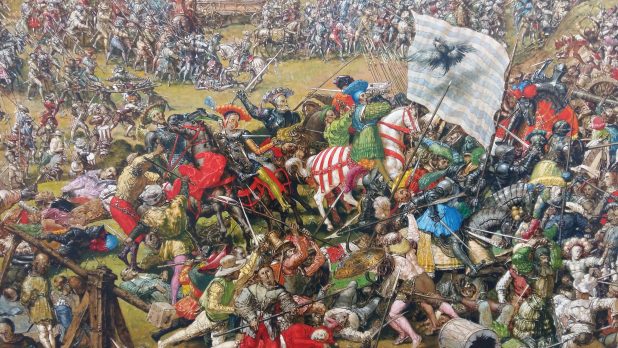

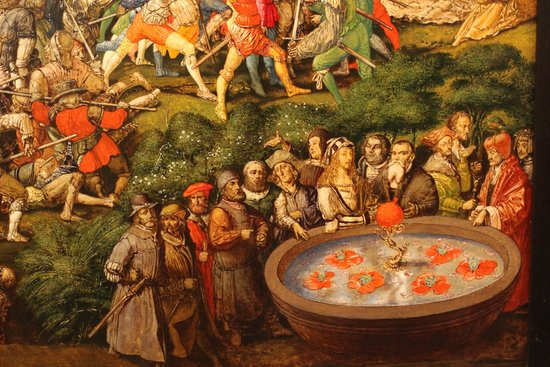

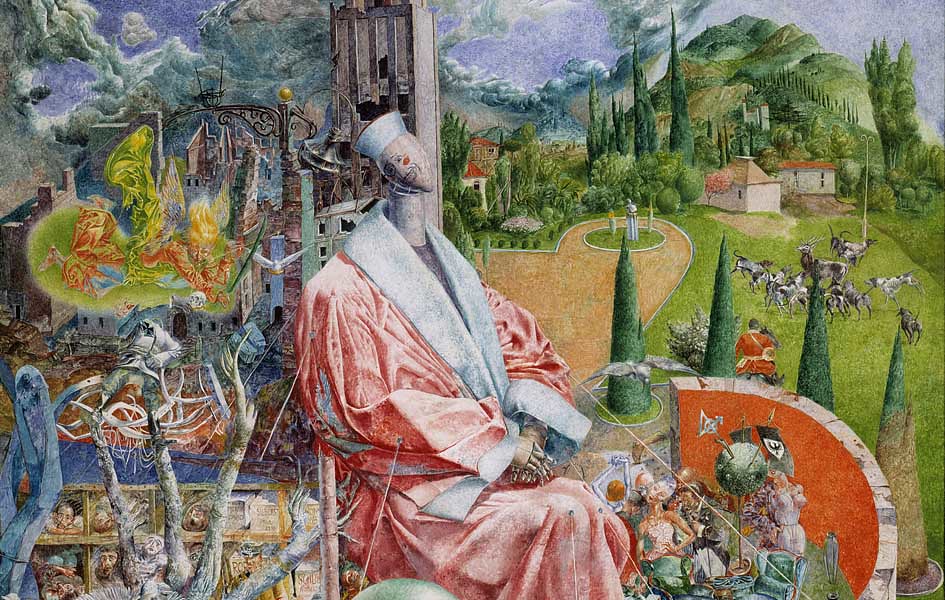

German painter, born in Schönebeck, one of the best-known but also one of the most controversial figures in the art of the Communist DDR. He joined the Artists' Union in 1952 as well as the East German Communist Party. His relations with the authorities could be problematic. In 1959 he was criticized for ‘concessions to modernist views of art’. His style drew on medieval and Renaissance sources and was far closer to the Magic Realism of Western Europe in the interwar period than to Socialist Realism. In early paintings he combined religious imagery with state-approved political subjects. The Portrait of the Cattle Breeder Brigadier Bodlenko (1962, Museum der Bildenden Künste, Leipzig), an equestrian portrait in the style of a medieval knight but sporting a modern wristwatch, was attacked as ‘a ghostly, bizarrely estranged relationship to life in a country that is engaged in building a communist society’.
In 1965 he produced a cycle of paintings entitled Die Lebenserinnerungen des Dr. jur. Schulze (Nationalgalerie, Berlin). Although not a commissioned work, it followed official ideology in depicting continuity between the Nazi regime and the present-day politics of West Germany. The principal figure is a judge who, having perverted the judicial system during the Third Reich, remains a lawyer in the Federal Republic. The jumble of images has been compared by Richard Pettit to the apocalyptic scenes of Bosch and Bruegel. Tübke was vehemently criticized for ‘idealism’ and especially for proximity to Surrealism. By the 1970s the complexity of such work had become sanctioned by official criticism under the category of Simultanbild (Painting of Simultaneous Images) or ‘dialogical pictures’, which depended upon an intellectual dialogue with the spectator. The acceptance of Tübke's art was one manifestation of a change in official cultural policy in which artists of the past such as Albrecht Dürer and Lucas Cranach were celebrated. In this context, Tübke, by then one of the leading figures in East German art, was commissioned in 1976 to paint a gigantic panorama entitled Early Bourgeois Revolution in Germany. It depicts the Battle of Frankenhausen (1525), which led to the defeat of the peasants, and is housed in a specially constructed building in Bad Frankenhausen. Tübke's ambition was to link the Reformation, the Renaissance, and the Peasants' War. The work was completed in 1987. Although he trained his own team of assistants, most were unable to cope with the demands of the project, the largest painting in Germany according to the Guinness Book of Records, and Tübke executed approximately two thirds of the work himself. His leading critical supporter in West Germany, Edward Beaucamp, wrote in 1993 that in the panorama ‘the artist in the end triumphs over the sponsor’ and that he ‘transformed the state monument into a pure art monument’.
By the time Germany was unified in 1989, Tübke already had a substantial reputation in the West. As early as 1972, West German curators had surreptitiously tried to persuade him to defect. His relationship to the Old Masters was very much in accord with the vogue for Postmodern quotation in the 1980s. Nonetheless, his most important post-Communist work, a three-winged altarpiece for the church of St Salvatoris in Clausthal-Zellerfeld (1997), was attacked by the critic Peter Iden as ‘devotional kitsch’. Alongside Fritz Cremer, Wolfgang Mattheuer, and others, Tübke exemplifies the problems of making simple distinctions between conformists and nonconformists among the artists of the DDR, let alone of making moral judgements on their conduct.
http://www.oxfordreference.com/view/10.1093/oi/authority.20110803110032525
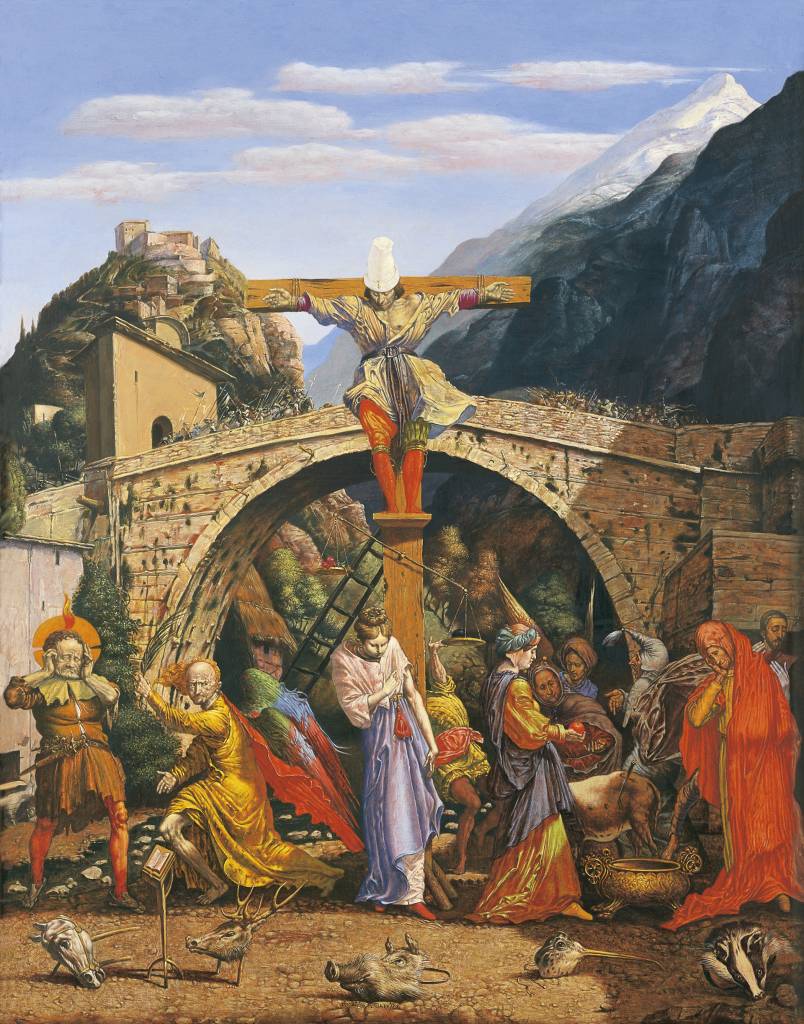



https://www.waandersdekunst.nl/werner-tuebke-meesterschilder-tussen-oost-en-west.html


Nema komentara:
Objavi komentar